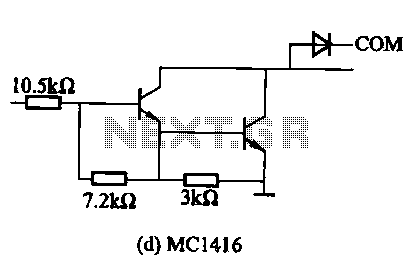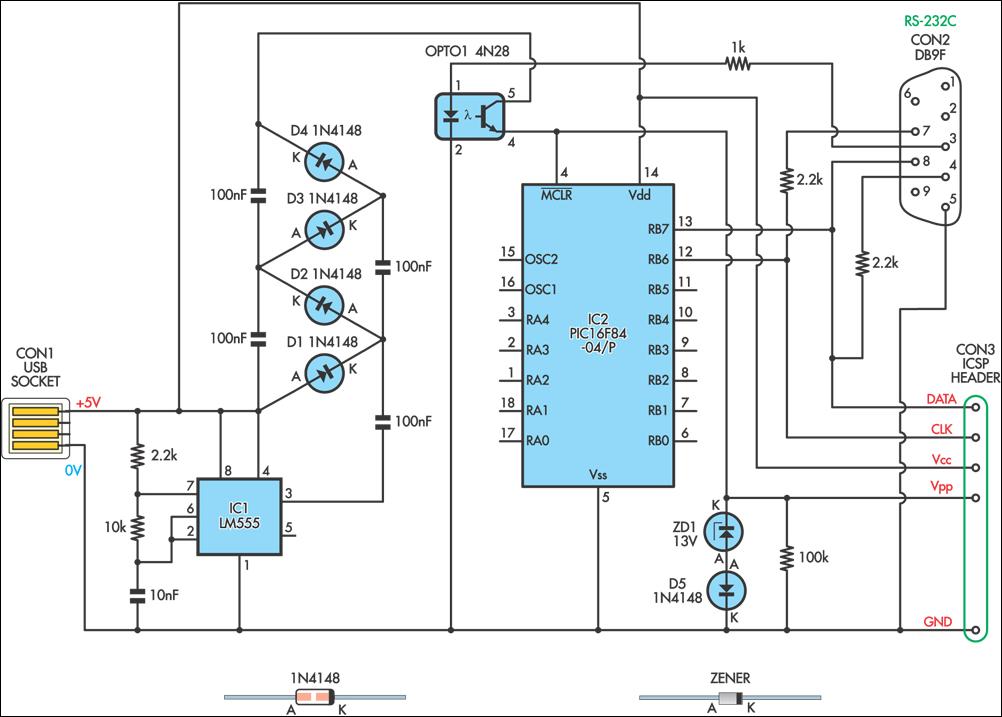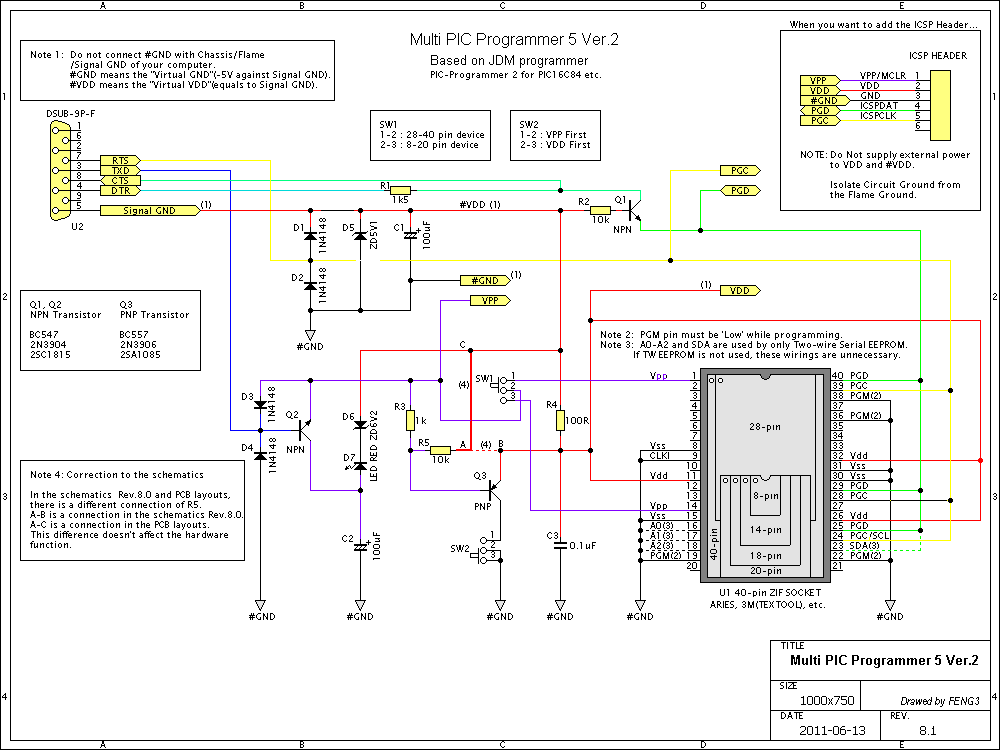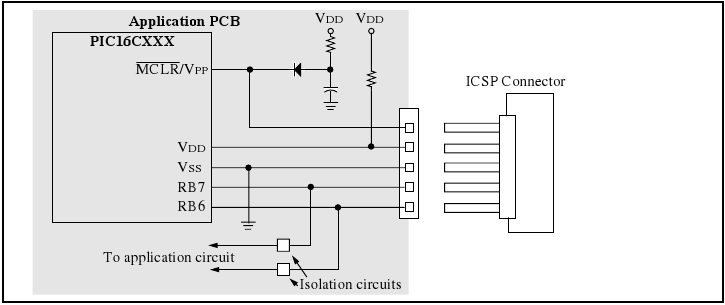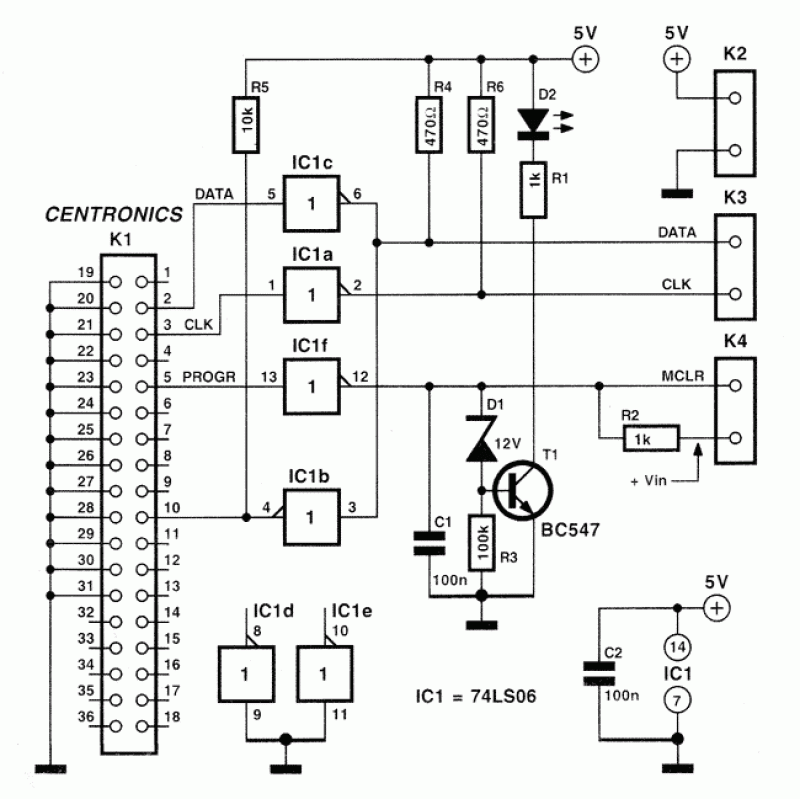
EEprom programmer for ATMEL 89 Series
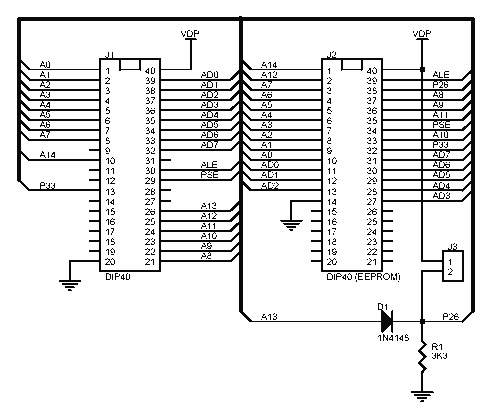
The EEprom programmer software supports the following devices 28C16 28C256 28C17 29C256 28C64. Diode D1 and resistor R1 provide the VDD isolation when programming the 24 pin devices. The jumper J3 must be shorted for 24 pin devices, and open circuit for 28 pin device programming. Following EEPROMs are pin compatible with their EPROMs version,
The EEPROM programmer circuit is designed to facilitate the programming of various EEPROM devices, specifically the 28C16, 28C256, 28C17, 29C256, and 28C64 models. The circuit incorporates a diode (D1) and a resistor (R1) that work in tandem to provide voltage isolation (VDD) during the programming process for 24-pin EEPROM devices. This configuration is crucial as it prevents unintended voltage levels from affecting the programming operation, ensuring that the device is programmed correctly.
The circuit features a jumper (J3) which plays a critical role in the selection of the device type being programmed. For 24-pin devices, J3 must be shorted, creating a closed circuit that allows the necessary signals and power to flow correctly for programming. In contrast, when programming 28-pin devices, J3 must be left open, which changes the circuit configuration to accommodate the additional pins and their corresponding functions. This flexibility in jumper configuration allows the programmer to support multiple EEPROM types without requiring significant hardware changes.
Additionally, the schematic may include a power supply section to provide the necessary VDD voltage, as well as signal lines connected to the programming interface. The pin compatibility of the specified EEPROMs with their EPROM counterparts indicates that the programmer can be used interchangeably for related devices, further enhancing the versatility of this programming tool. Proper attention to the pin layout and electrical characteristics of each device is essential for successful programming and operation of the circuit.The EEprom programmer software supports the following devices 28C16 28C256 28C17 29C256 28C64. Diode D1 and resistor R1 provide the VDD isolation when programming the 24 pin devices. The jumper J3 must be shorted for 24 pin devices, and open circuit for 28 pin device programming. Following EEPROMs are pin compatible with their EPROMs version, 🔗 External reference
The EEPROM programmer circuit is designed to facilitate the programming of various EEPROM devices, specifically the 28C16, 28C256, 28C17, 29C256, and 28C64 models. The circuit incorporates a diode (D1) and a resistor (R1) that work in tandem to provide voltage isolation (VDD) during the programming process for 24-pin EEPROM devices. This configuration is crucial as it prevents unintended voltage levels from affecting the programming operation, ensuring that the device is programmed correctly.
The circuit features a jumper (J3) which plays a critical role in the selection of the device type being programmed. For 24-pin devices, J3 must be shorted, creating a closed circuit that allows the necessary signals and power to flow correctly for programming. In contrast, when programming 28-pin devices, J3 must be left open, which changes the circuit configuration to accommodate the additional pins and their corresponding functions. This flexibility in jumper configuration allows the programmer to support multiple EEPROM types without requiring significant hardware changes.
Additionally, the schematic may include a power supply section to provide the necessary VDD voltage, as well as signal lines connected to the programming interface. The pin compatibility of the specified EEPROMs with their EPROM counterparts indicates that the programmer can be used interchangeably for related devices, further enhancing the versatility of this programming tool. Proper attention to the pin layout and electrical characteristics of each device is essential for successful programming and operation of the circuit.The EEprom programmer software supports the following devices 28C16 28C256 28C17 29C256 28C64. Diode D1 and resistor R1 provide the VDD isolation when programming the 24 pin devices. The jumper J3 must be shorted for 24 pin devices, and open circuit for 28 pin device programming. Following EEPROMs are pin compatible with their EPROMs version, 🔗 External reference

